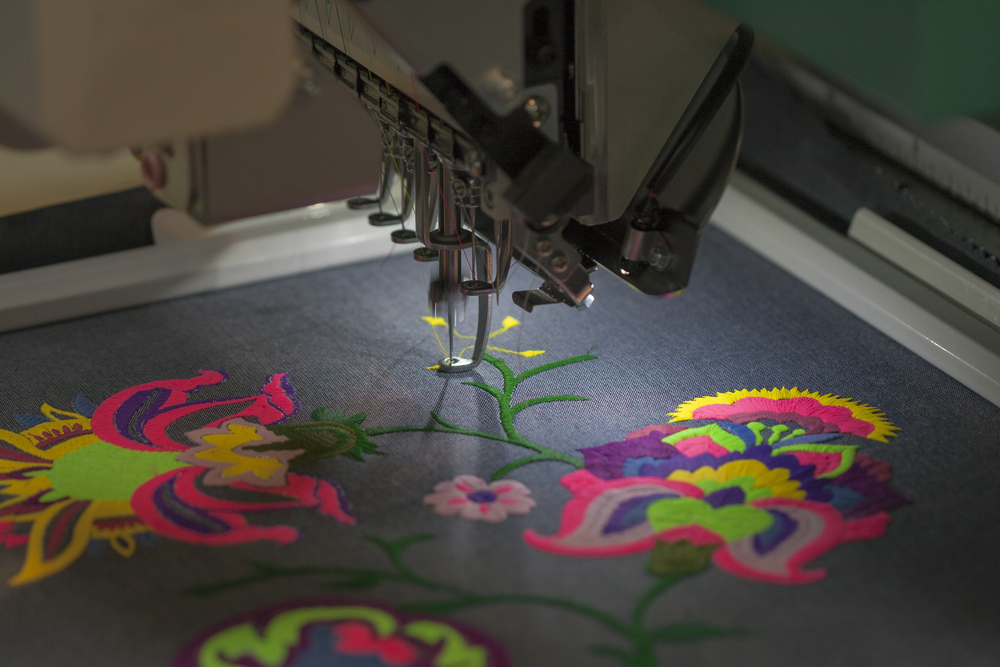Premier Digitizing for Embroidery: Perfect Stitch Whenever
Premier Digitizing for Embroidery: Perfect Stitch Whenever
Blog Article
Grasping the Needlework Digitizing Process: Your Ultimate Guide
Needlework digitizing is a meticulous craft that calls for precision and competence to convert detailed layouts into electronic layouts for machine embroidery. As artisans get started on this trip to understand the embroidery digitizing process, an extensive understanding of the fundamentals establishes the structure for excellence. Past the rudimentary understanding exists a world of sophisticated software, specialized tools, and nuanced methods waiting to be checked out. By delving right into the nuances of digitizing, one can unlock a world of innovative opportunities and raise their needlework jobs to new heights.

Understanding Embroidery Digitizing Essentials
Embroidery digitizing essentials create the structure whereupon detailed layouts are converted right into machine-readable styles for exact stitching. This preliminary action in the embroidery digitizing process is crucial for ensuring that the last embroidered item is a devoted representation of the initial design. Understanding embroidery digitizing basics entails grasping crucial principles such as stitch kinds, sew direction, density, underlay, and draw settlement.
Stitch types play a vital duty in figuring out the visual and textural outcome of the stitched style. By picking the ideal stitch kind, whether it be satin, fill, or running stitch, digitizers can accomplish the desired result and improve the overall top quality of the needlework. Additionally, sew direction influences the circulation and dimension of the design, while thickness identifies the spacing and coverage of the stitches.
In addition, rug stitching supplies stability to the layout by protecting the textile and stopping distortion during the needlework process. Draw compensation is one more vital consideration to neutralize the natural propensity of fabric to agreement when stitched. Grasping these needlework digitizing fundamentals is basic for creating professional-quality stitched products.
Selecting the Right Digitizing Software Program
Selecting the suitable digitizing software program is a crucial decision that substantially influences the efficiency and quality of the embroidery digitizing procedure. Digitizing for Embroidery. When picking the appropriate digitizing software, it is vital to consider aspects such as the complexity of styles you plan to develop, the user-friendliness of the software application, the degree of consumer assistance offered, and the compatibility with your needlework equipment
There are various digitizing software program alternatives offered in the marketplace, ranging from basic programs for beginners to advanced software program for specialist digitizers. Some preferred selections consist of Wilcom EmbroideryStudio, Hatch Needlework Software Application, and PulseID. These software offer a wide variety of tools and features to help you create detailed layouts with convenience.
Prior to deciding, it is recommended to discover the various software application choices through free tests or demonstrations to identify which one best matches your requirements. Furthermore, reading testimonials and looking for recommendations from knowledgeable digitizers can offer valuable understandings into the strengths and weak points of each software application package (Digitizing for Embroidery). By meticulously reviewing your demands and comparing the functions of different digitizing software program, you can make an educated sites choice that boosts your embroidery digitizing workflow
Digitizing Devices and Techniques

Optimizing Design Settings for Embroidery
Mastering the intricacies of design setups is basic in attaining ideal cause the embroidery digitizing process, building upon the foundation laid by recognizing digitizing devices and strategies. When maximizing style settings for embroidery, it is important to think about elements such as stitch type, thickness, rug, pull compensation, and registration. Sew kind choice impacts the general feel and look of the style, with choices like satin, fill, and running stitches using different structures and results. Density describes the spacing and density of stitches, affecting the design's protection and durability. Appropriate rug sewing gives stability and prevents textile distortion, particularly for complex layouts or on stretchy products. Pull settlement changes for fabric stretch throughout stitching, ensuring exact design duplication. Registration setups align various elements of the layout accurately, keeping overall layout integrity. By fine-tuning these style settings, embroiderers can improve the quality and accuracy of their have a peek here stitched developments.

Troubleshooting Common Digitizing Issues
When experiencing usual digitizing issues throughout the needlework process, it is vital to recognize the origin causes and execute reliable solutions immediately. One usual problem is stitch density concerns, where stitches might be too dense, creating the textile to pucker, or as well sporadic, bring about gaps in the style. Changing the stitch thickness settings in the digitizing software can assist solve this issue.
Another regular difficulty is string breaks during the embroidery process. This can take place as a result of various reasons such as incorrect tension settings, boring needles, or utilizing low-grade string. Making certain proper maintenance of the embroidery device, consisting of normal needle adjustments and stress modifications, can lessen the occurrence of string breaks.
Moreover, layout enrollment mistakes can lead to misaligned elements within the Continued embroidery design. Checking the design alignment in the digitizing software application and making required modifications prior to stitching can help in avoiding this issue. By addressing these common digitizing concerns without delay and properly, you can make certain a smoother needlework process and top notch completed products.
Conclusion
To conclude, mastering the needlework digitizing procedure needs a solid understanding of the fundamentals, the best choice of software program, and expertise of tools and techniques. Maximizing style settings and troubleshooting usual digitizing problems are essential action in ensuring high-quality needlework outcomes. By complying with these steps vigilantly, one can attain precision and effectiveness in the digitizing process.
Report this page